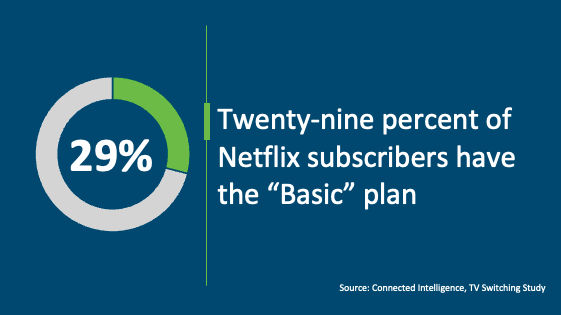
Amazon’s ad-take
Viewers went from watching linear television with commercials, to being able to fast forward through commercials by recording content, to avoiding commercials all together with streaming platforms. But now, the trend is shifting back toward advertisements being interspersed throughout content. One platform benefitting from this is Amazon’s Freevee. Freevee is the platform’s ad-supported service that even has its own originals, including spin-offs of popular shows such as Bosch: Legacy and Leverage: Redemption. According to Amazon, viewership on Freevee has been increasing, growing over 100% from 2020 to 2021. This has led the streamer to invest 70% more in original content versus last year. As such, Freevee is becoming a more popular streaming as Netflix and Disney+ are about to launch their own lower priced ad-supported tiers. With Freevee, consumers can get this ad supported “tier” without needing to sign up for another service; it is already included in their Amazon Prime subscription.
The NPD Take:
- Viewers are quickly being re-acclimated to ad-supported TV, putting Freevee’s positioning at the cross hairs of this seismic industry shift.
- As price sensitivity creeps further into an inflation-fueled market, lower cost and free ad-supported tiers will be needed to retain the engagement of those that can’t afford to buy their way out of ads.
Peacock benefits from new release strategy change
When the COVID-19 pandemic hit and movie theaters shut down, studios resorted to releasing already scheduled films on streaming platforms. Then, when theaters began to reopen, they saw success with this method and continued with a hybrid model. That is movies were released theatrically and on streaming services, sometimes even streaming exclusively. The pandemic allowed for flexibility from the traditional movie release model, where a 90-day theatrical window is no longer required for all movies. NBCUniversal is benefitting from this, as CEO Jeff Shell recently explained. They are investing more in movies -- making twice as many as their competitors -- as they have seen them drive success for their streamer, Peacock.
The NPD Take
- Theatrical viewing was already seeing a downhill path pre-pandemic, and the shutdown of the theaters allowed studios to increase interest in new movies by releasing them in a way consumers now like to watch -- directly in their homes.
- Peacock is also benefitting from sports and day-after broadcasts of series pulled from Hulu. Notable, this programming mix resembles the successful cable bundles of the past in that they include sports, TV series, movies and more.
Netflix gets ads
Netflix is finally launching its long-discussed ad-supported tier. Starting November 3rd, users in the U.S. will be able to subscribe to a Netflix with ads for $6.99/month. This is $3 cheaper than the current “Basic” plan. The tier will have four to five minutes of advertisements per hour of content, with commercials only playing for 15-30 seconds. The other difference with the new tier is some non-original content not being available due to licensing restrictions. The move comes as Netflix is working on growing revenue after losing subscribers.
The NPD Take:
- As inflation challenges lower income households and streaming prices continue to increase, new ad-supported tiers offer viewers a way to stay tuned in.
- Overall, it does not matter which offering subscribers choose as the pricing is structured to be equally or even more beneficial to the company if a viewer opts into the lower price ad-supported tier. Viewers are just paying with their time as the company procures the revenue from ad partners.